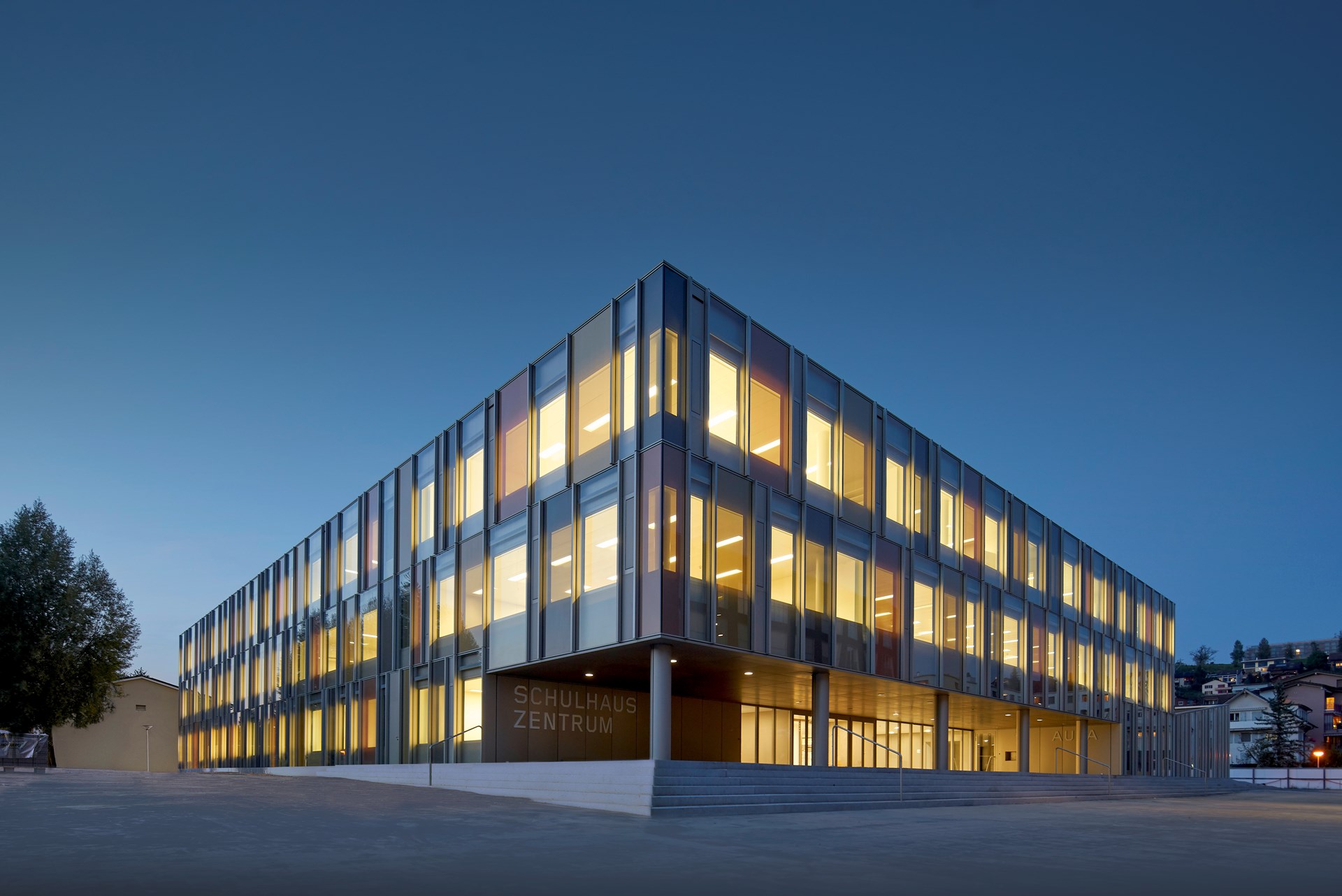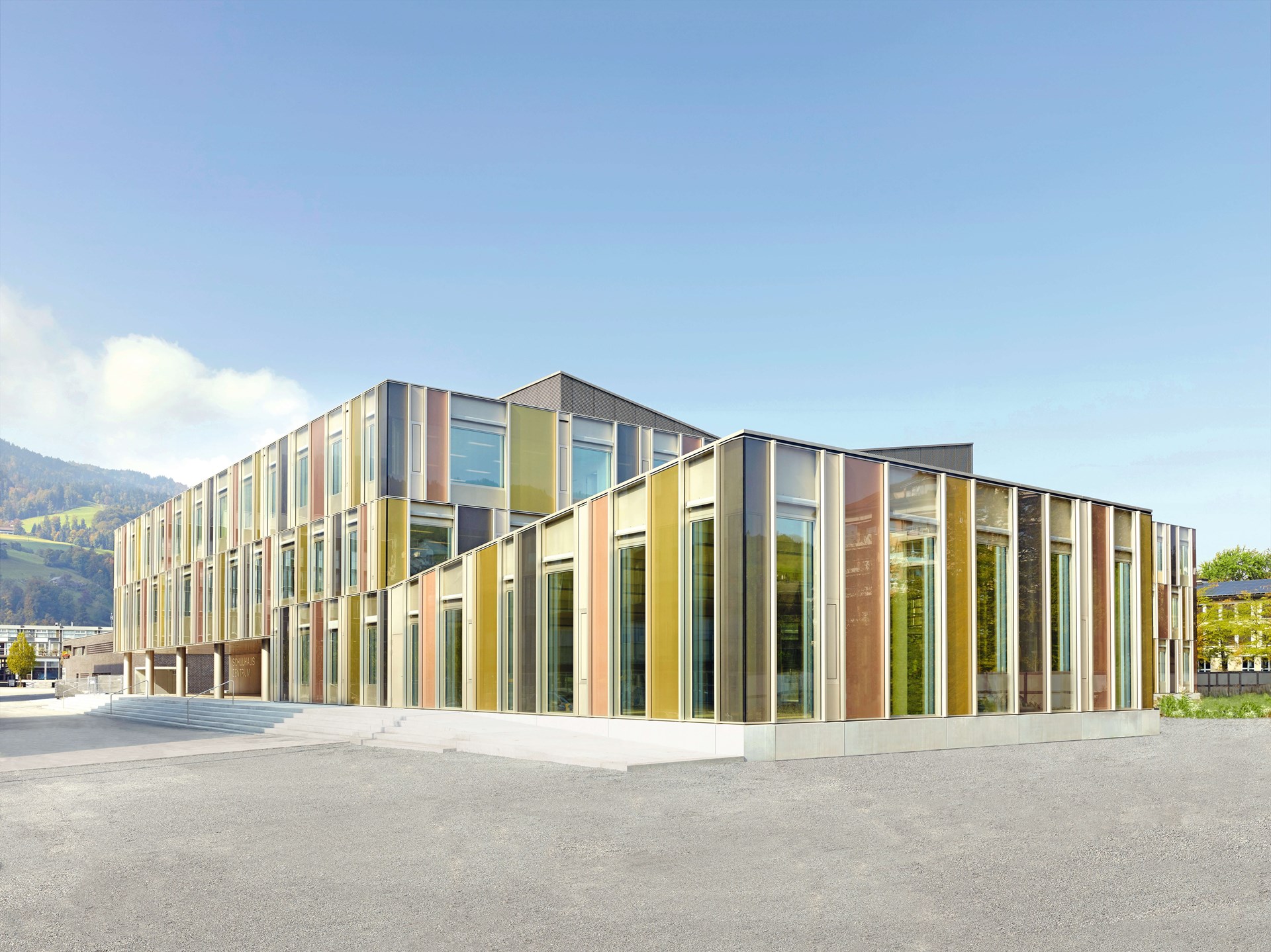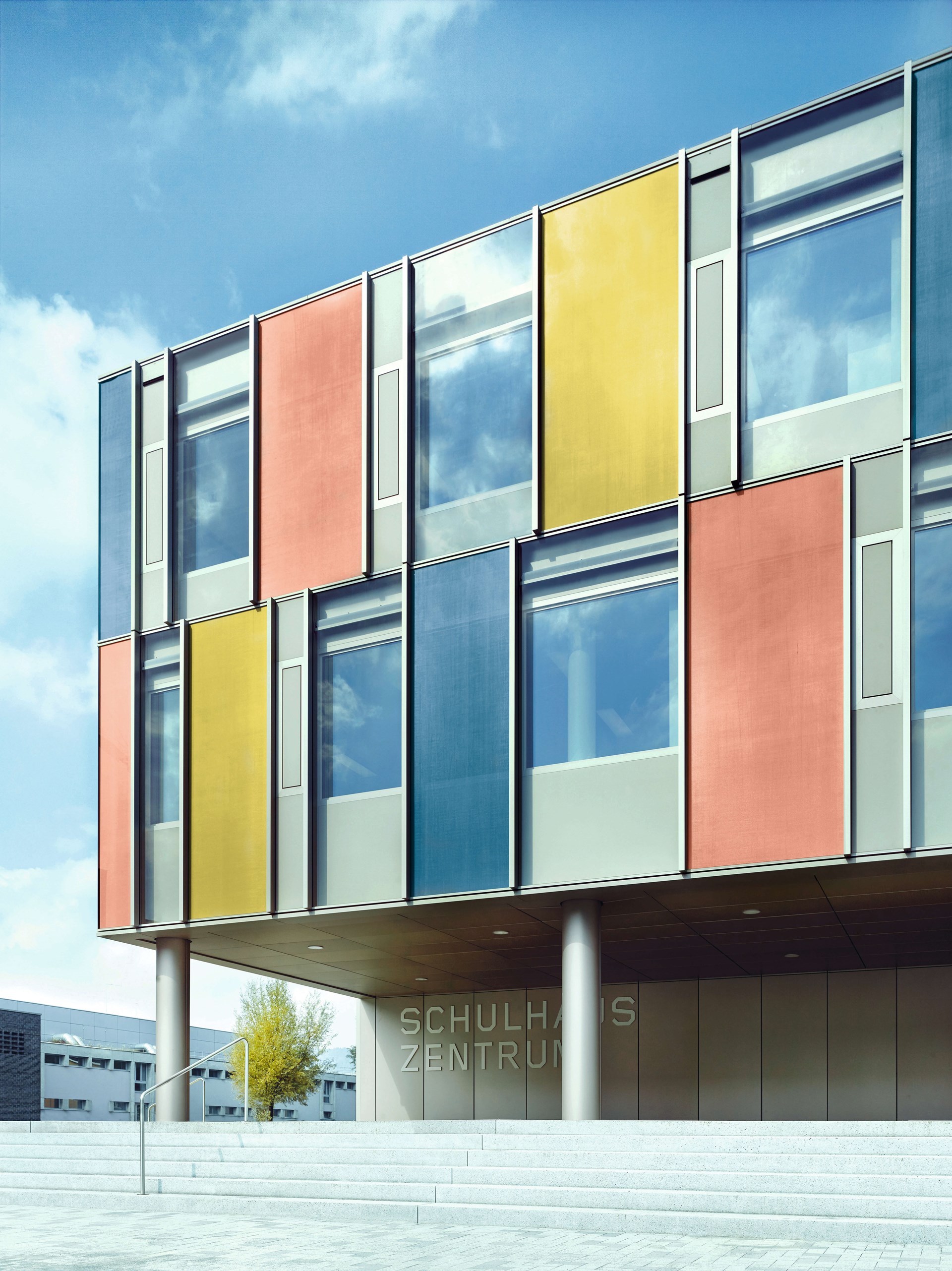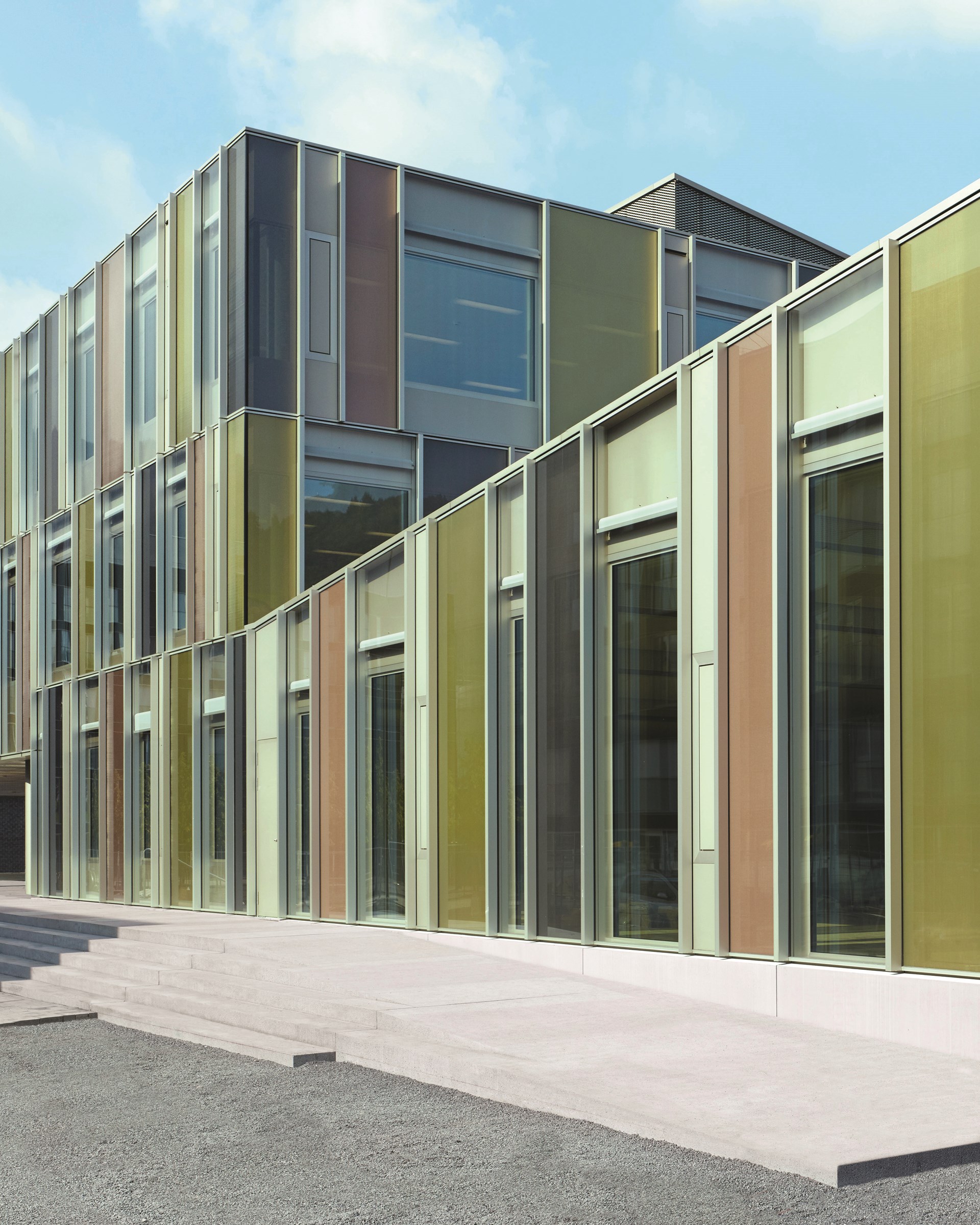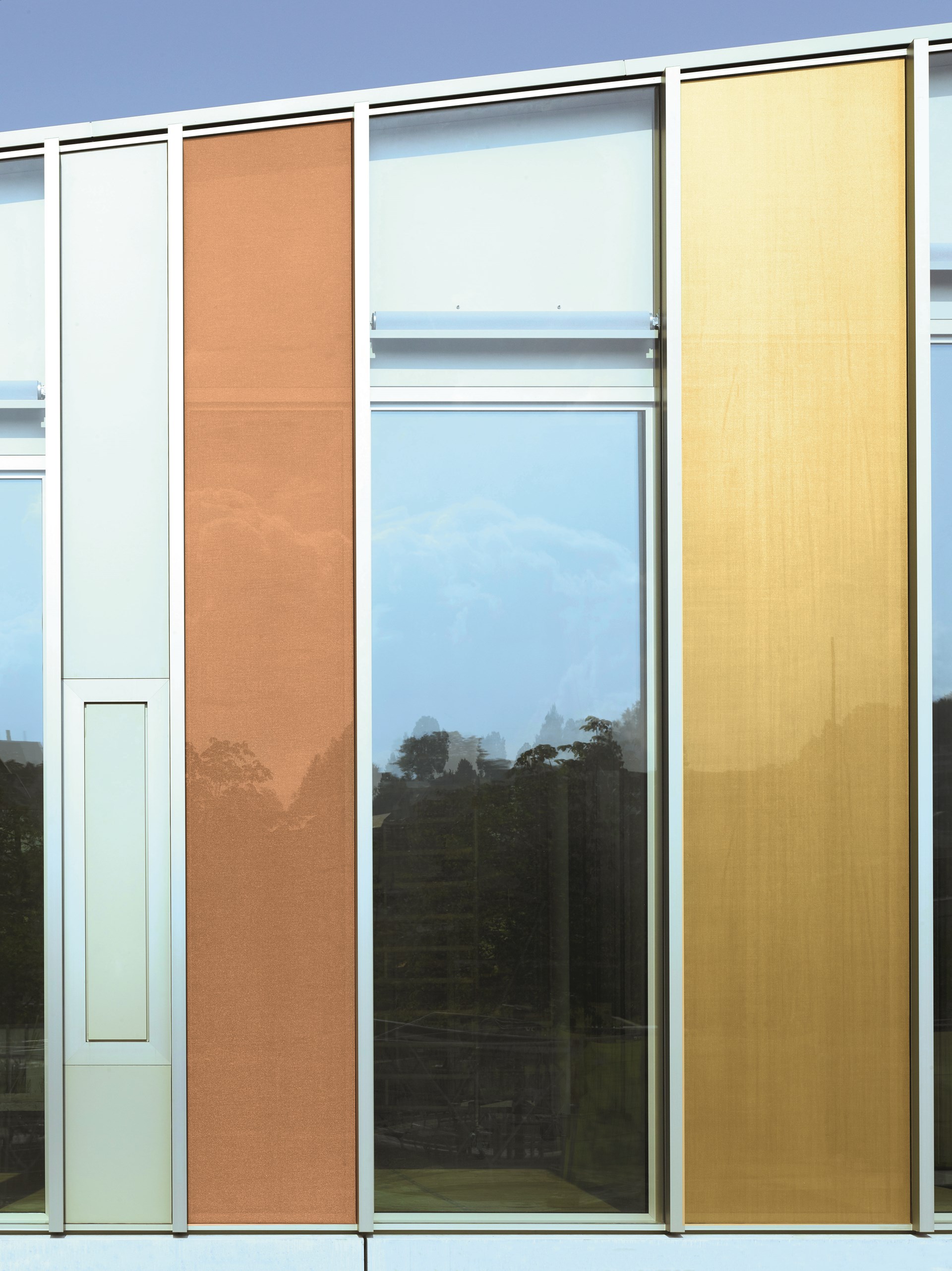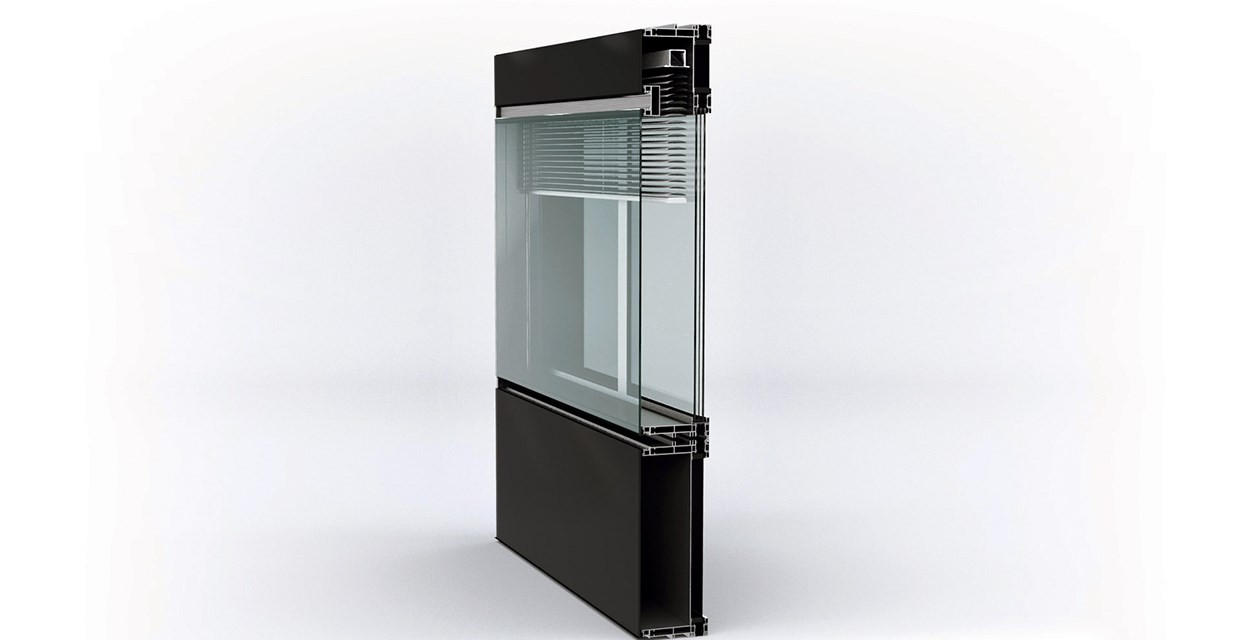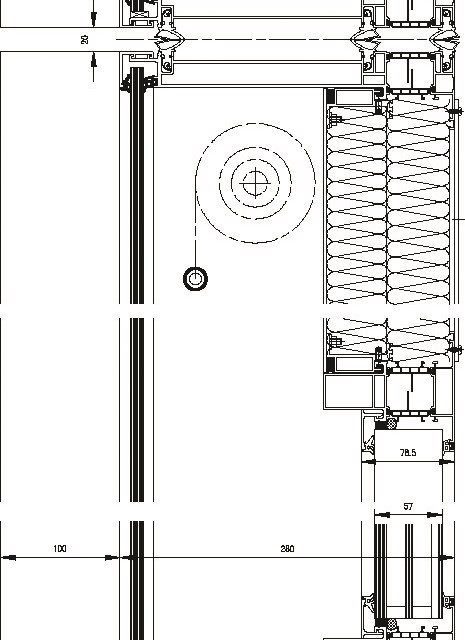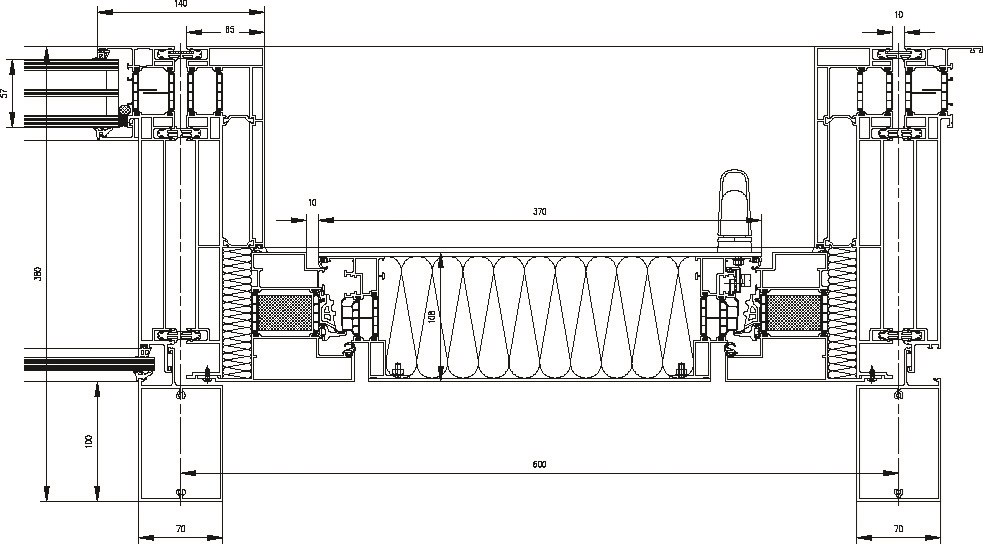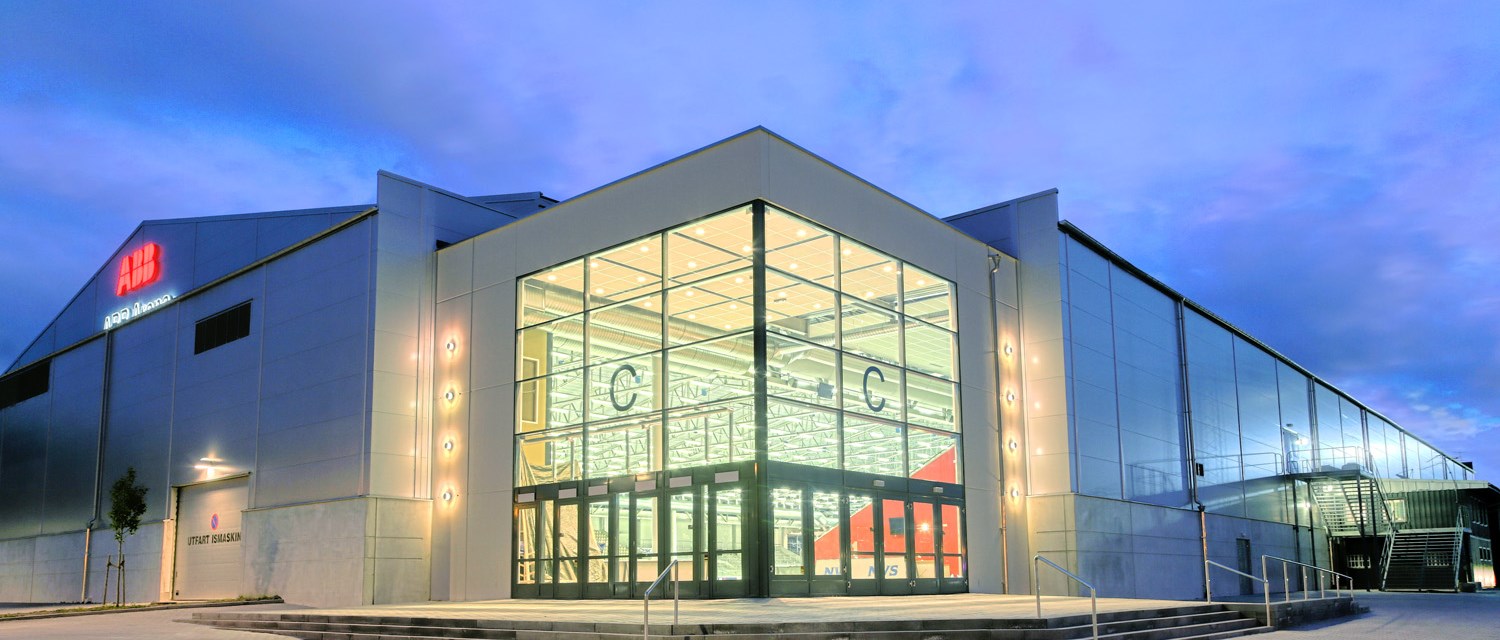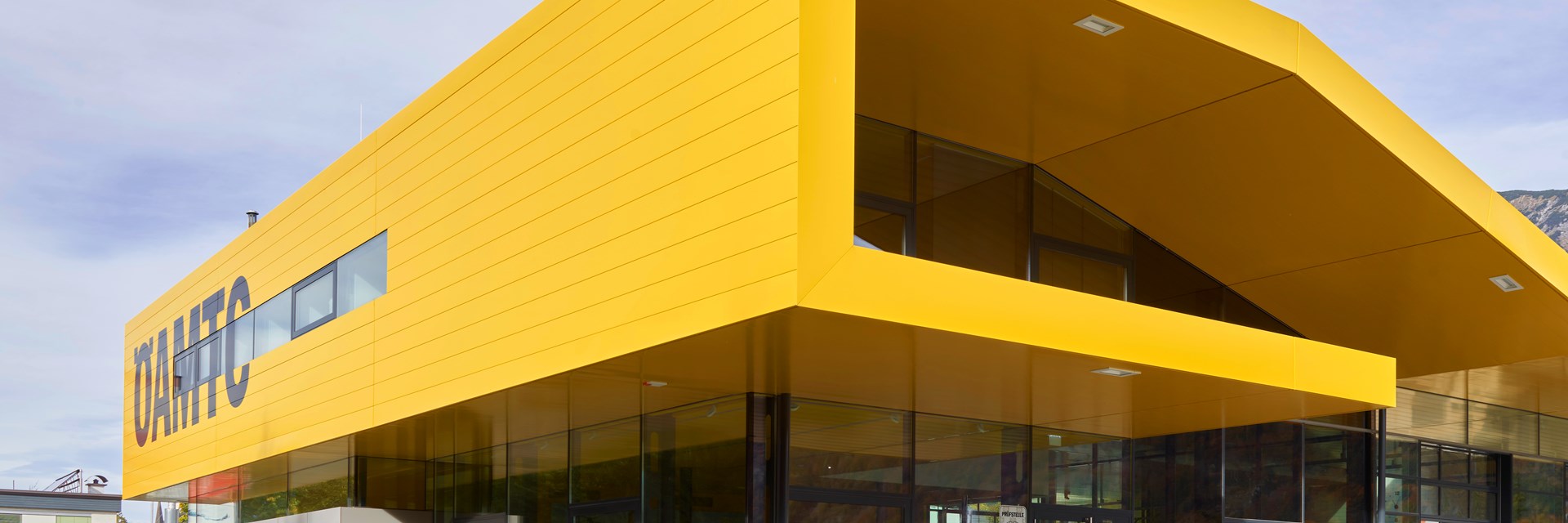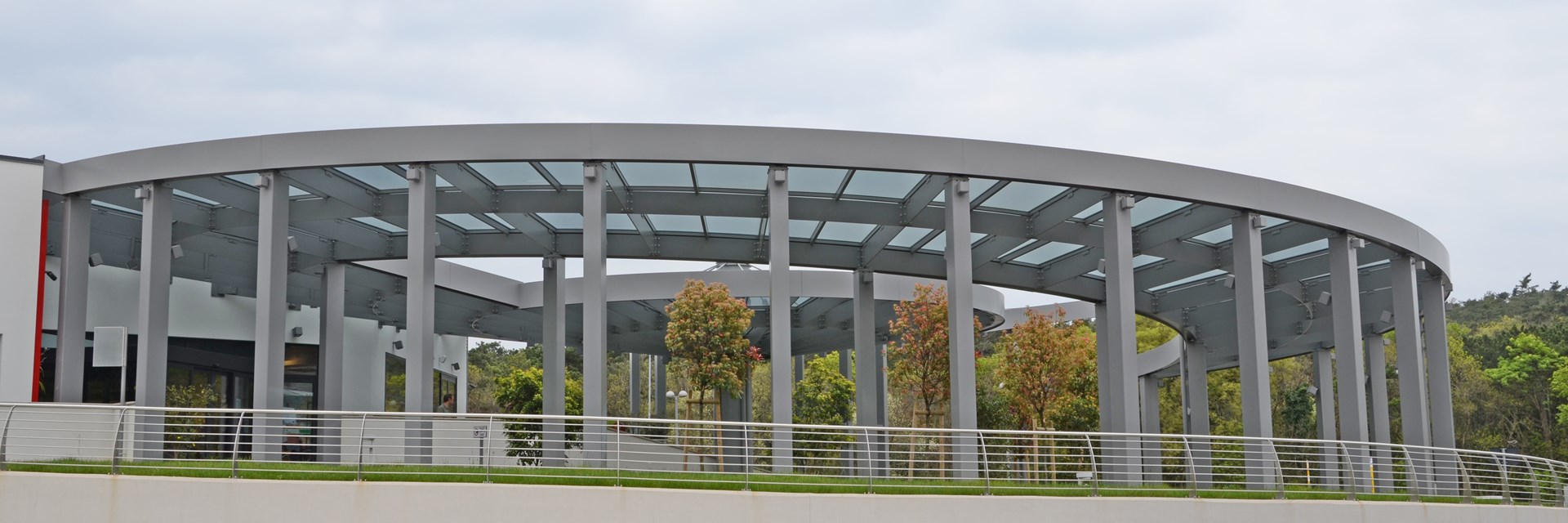PROJECT DETAILS
High-tech façade creates perfect learning environment
Horw secondary school in Canton Lucerne, Switzerland, opened in October 2017 following a 2 year refurbishment. The building now fulfils the requirments of the Swiss Minergie Standard, thanks in part, to the innovative WICTEC Modul air facade system from WICONA. Thanks to its technical features and the attractive design this “new” school attracts plenty of attention.
In 2013 a two-thirds majority of the population of Horw voted in favour of the refurbishment. This required the building, dating from the 1970s, to be demolished to its foundations and steel supporting structure. The consortium, Lussi + Halter (Lucerne), who emerged as winners of the 2013 competition for the project, were responsible for the entire design and planning process.
The architects created their façade design plan as follows: "The curtain wall will be designed from scratch as a double-skin glass construction (CCF façade). The rhythmic interplay of the coloured glazing creates an unmistakeable and unique look for the secondary school building." The façade has a total area of 3,400 m², with detailed planning done by gkp fassadentechnik ag (Aadorf). Lussi + Halter decided early on to equip the school with a closed cavity façade (CCF). The planners selected the WICTEC Modul air façade from WICONA, thanks to its large slim units and narrow sight lines to create an elegant design.
WICTEC Modul air was installed in Horw as a unitised curtain walling construction with ventilation flaps to the outside and internal parapets. The aluminium profiles were designed and manufactured specially for this construction. The WICTEC Modul air profile system consists of continuous, highly thermally insulating surround frames with extruded pilaster strips. The frame accommodates the internal triple glazing and the external single glazing in a single profile. The internal glazing is divided by a horizontal transom profile in the top of the façade units. This is where the solar shading devices, drives and façade connecting elements of the dry air technology are located. These components are outside the cavity and easily accessible for maintenance. WICTEC Modul air features a compact design, enabling a reduction of up to 50 per cent in the overall depth compared to conventional double façades.
The high-performance multifunctional WICTEC Modul air façade is a double-skin construction and hermetically sealed. Due to the continuous flushing with dry air, virtually clean-room conditions occur in the façade cavity. The WICONA dry air unit in the Modul air system ensures the necessary flushing of the façade units. The dry air is distributed over the façade units using special control technology. It is so precisely adjusted that the change of air provides continuous freedom from condensation in the cavity and at the same time ensures top energy efficiency.
The solar shading devices are located in the façade cavity where they are protected. All building components have undergone rigorous long-term testing which ensures their suitability. These included UV and temperature resistance, wear and embrittlement. Components made of plastic have been tested for their fogging behaviour. Studies at prestigious institutes have also demonstrated that no visible precipitation of fine particles occurs on the surfaces.
A special visual feature of the façade in Horw is the elements which are opaque from outside but transparent from inside. This is due to a special fabric made by the Swiss company Sefar AG (Heiden) and called SEFAR®Architecture VISION. The fabric in gauges of 140 and 260 micrometres consists of black synthetic fibres coated with metal. Three different colours of the fabric were laminated into the glass for incorporation in the façade units (execution by BGT Bischoff Glastechnik AG, Bretten): TI 260/25 B, PR 260/25B and PR 260/25B gold.
This colour spectrum and the positioning of the opaque elements in the façade produce the special glass effect and a certain play with the light. The effect of this glass configuration integrated in the façade on the total energy transmittance (g value) is described by Sefar as follows: "The so-called open area of the fabric determines the degree of light transmission and transparency. The production process results in mesh with open areas of 25% up to a maximum of 55%. The metal coating also influences light transmission and energy transmittance. The choice of fabric is always determined by the intended purpose of the project.
A significant reduction in the incidence of light or heat can be achieved, particularly with the denser fabrics.” According to the manufacturer, SEFAR® Architecture VISION fabrics reflect thermal radiation by up to 45% and even absorb a large proportion of the radiation. The fabrics laminated into the glass for the school in Horw also score with the "one-way-vision effect" – this creates privacy inside but, conversely, an almost unrestricted view outwards for the pupils and teachers.
